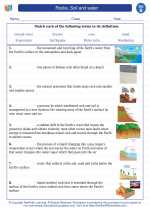Law of Acceleration
The Law of Acceleration, also known as Newton's Second Law of Motion, describes the relationship between the force acting on an object, its mass, and its acceleration. The law can be expressed mathematically as:
center;">F = ma
Where:
- F is the force applied to the object
- m is the mass of the object
- a is the acceleration produced
This formula states that the force acting on an object is directly proportional to the mass of the object and the acceleration produced. In other words, the greater the force applied to an object, the greater its acceleration, and the greater the mass of the object, the smaller its acceleration for the same force.
Study Guide
- Understanding the Formula: Explain the meaning of each variable in the formula F = ma.
- Units of Measurement: Discuss the units of measurement for force (Newton), mass (kilogram), and acceleration (meters per second squared).
- Examples: Provide real-world examples of how the law of acceleration applies, such as a car accelerating on a road or a rocket launching into space.
- Relationship to Newton's Laws: Explain how the Law of Acceleration is connected to Newton's other laws of motion, particularly the First and Third Laws.
- Calculations: Practice solving problems using the formula F = ma to calculate force, mass, or acceleration in various scenarios.
- Graphical Representation: Create and interpret graphs showing the relationship between force, mass, and acceleration.
Understanding the Law of Acceleration is essential for comprehending the behavior of objects in motion and is a fundamental concept in the field of physics.
[Law Of Acceleration] Related Worksheets and Study Guides:
.◂Science Worksheets and Study Guides Second Grade. Rocks, Soil and water
Study Guide Rocks, Soil and water
Rocks, Soil and water  Worksheet/Answer key
Worksheet/Answer key Rocks, Soil and water
Rocks, Soil and water  Worksheet/Answer key
Worksheet/Answer key Rocks, Soil and water
Rocks, Soil and water  Worksheet/Answer key
Worksheet/Answer key Rocks, Soil and water
Rocks, Soil and water  Vocabulary/Answer key
Vocabulary/Answer key Rocks, Soil and water
Rocks, Soil and water  Vocabulary/Answer key
Vocabulary/Answer key Rocks, Soil and water
Rocks, Soil and water 

 Worksheet/Answer key
Worksheet/Answer key
 Worksheet/Answer key
Worksheet/Answer key
 Worksheet/Answer key
Worksheet/Answer key
 Vocabulary/Answer key
Vocabulary/Answer key
 Vocabulary/Answer key
Vocabulary/Answer key

The resources above cover the following skills:
EARTH AND SPACE SCIENCE (NGSS)
Earth’s Place in the Universe
Students who demonstrate understanding can:
Make observations from media to construct an evidence-based account that Earth events can occur quickly or slowly.